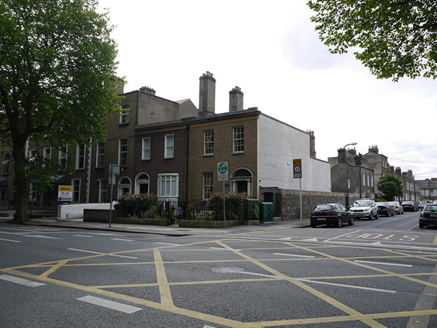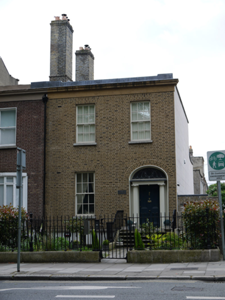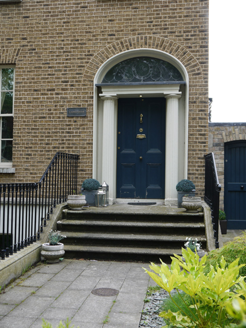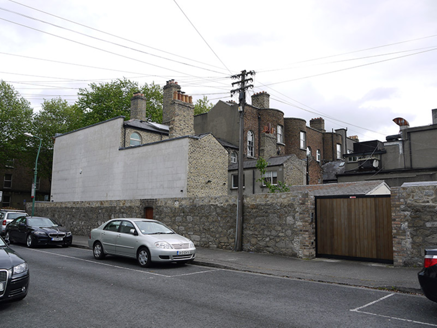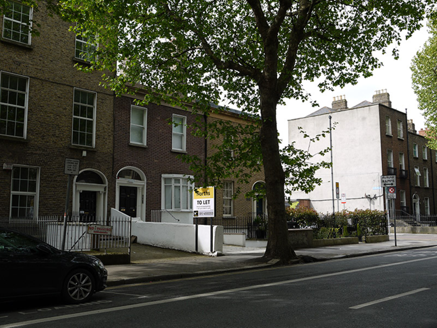Survey Data
Reg No
50110215
Rating
Regional
Categories of Special Interest
Architectural
Original Use
House
In Use As
House
Date
1850 - 1870
Coordinates
315520, 232715
Date Recorded
21/05/2017
Date Updated
--/--/--
Description
End-of-terrace two-bay two-storey house over basement, built c. 1860, as one of pair, having three-storey return to rear. M-profile pitched roof hidden behind rendered parapet with moulded render cornice to front (north) elevation. Shared brown brick chimneystacks. Yellow brick, laid in Flemish bond, to wall to front. Cut granite plinth course over rendered wall to basement. Yellow brick, laid in English garden wall bond, to rear. Lined-and-ruled wall to side (west) elevation. Square-headed window openings having granite sills and replacement windows. Elliptical-headed door opening with moulded render surround, doorcase comprising fluted columns and cornice, fanlight, timber panelled door. Nosed granite steps and platform with cast-iron railings. Yard to front enclosed by replacement railings on carved granite plinth wall. Rubble stone boundary wall to side (west).
Appraisal
This house retains much of its early form and character. Well-proportioned openings, cut granite and moulded render detailing articulate the façade. The front garden boundaries remain intact, contributing to its early suburban character. Despite its modest scale, it shares characteristics with the adjoining houses resulting in a coherent streetscape. Casey (2005) notes that Portobello 'began to develop with the opening of the canal harbour in 1801. Streets between the South Circular Road and the canal [including] Harrington Street have single-and double-fronted houses of Late Georgian character'. Harrington Street was predominantly developed after 1850.
